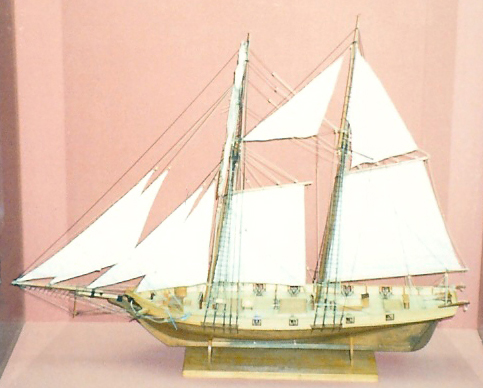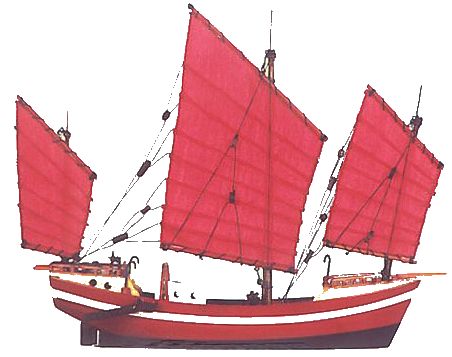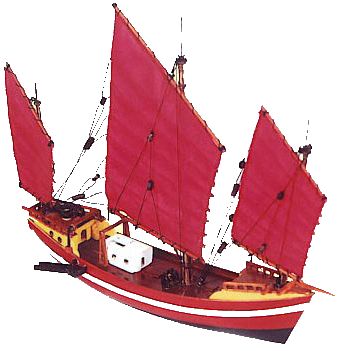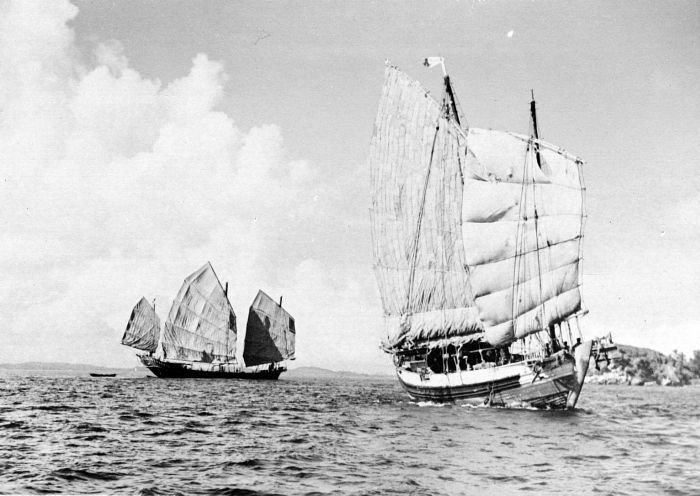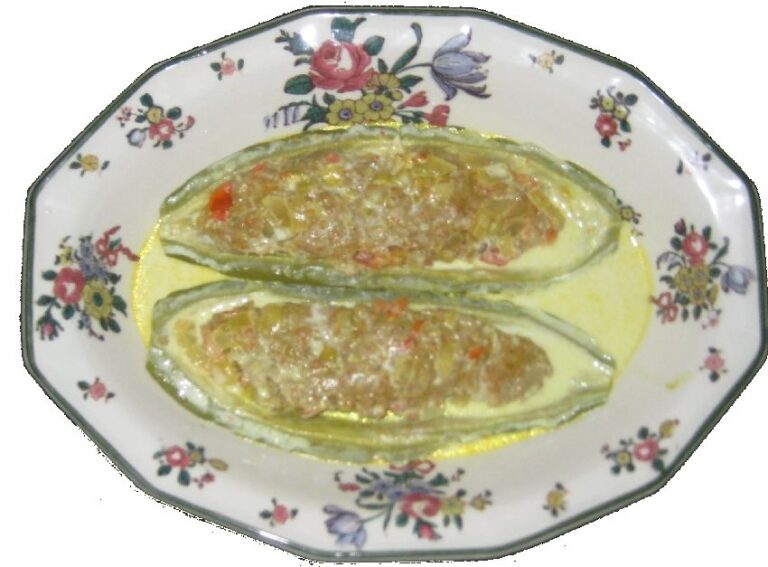The Fighting Lorchas of Macau
by J. Bosco Correa
This is an edited version of an article first published in the Bulletin of Casa de Macau (Australia).
The Lorcha, which was so much a part of Macau’s maritime scene and it’s rich history, is still commemorated today in Macau’s cuisine by one of it’s popular dishes – Amargoso Lorcha.
These gallant little fighting ships were designed in Macau, by Macaenses, for Macau. They incorporated the finest of Portuguese and Chinese naval architecture of that time and were built specifically as fighting ships operating against pirates, as coast guard and for convoy duty. They were built in the Porto Interior (Inner Harbour) of Macau, mainly of teak [and camphor-wood] with a flat bottom and very light draft. The stern and rudder were of Chinese design and the vessel was well adapted for tacking about quickly. As a rule they were two-masted, with lateen as well as round sails. Their size ranged from 40 to 150 tons, but in the main they were from 50 to 100 tons. The smaller lorchas carried four to six guns and larger ones were equipped with twenty guns– – from 1- to 24-pounders, the lighter pieces on swivels. Half of their crew were Portuguese and the other half Chinese, all well armed with muskets, swords and spears.
The lorchas were gaily painted and brightened up Macau’s harbour. According to the historian Montalto Jesus the lorchas were Macau’s best hope during the mid-19th century. He wrote,
“constituting as they did a pledge of her (Macau’s) welfare economically as well as politically. And acting for the same cause which shed lustre on the colony’s origin, the Macaenses showed that they had not lost the mettle of their historical forefathers in fighting pirates and thereby winning China’s goodwill for Macau.”
The lorchas ventured everywhere along the China coast and the mandarins employed them for their own protection as well as for escort duty for their traders and fishermen. Their convoy duties took them as far as Taiwan, Korea and Japan. They were even known to have crossed the Pacific to California! At that time the pirates totally controlled the coast, and the mandarins and traders in general were held to ransom by these brigands. It was only when supported and assisted by our lorchas did the mandarins attain victories against the pirates.
The work of those manning the lorchas. although very perilous, was extremely lucrative and undoubtedly assisted immensely in the economy of Macau. The success of the lorchas eventually led to jealousy amongst the British, French and others who instigated the massacre of the Portuguese at Ningpo on June 26, 1857 by the Chinese, supported by foreign privateers. An assault was made on all Portuguese ashore and afloat, the Portuguese consulate was pillaged and wrecked, the flag hauled down and trampled on. The British Consulate drove out Portuguese refugees seeking shelter there, to be butchered or slowly tortured to death.
The lorcha was something very special to the Macaense; it was made up of the best of the east and of the west – like Macau. Its role has at times been misconstrued. It was never a fishing boat and certainly not a Chinese junk. Many of our forefathers were lorcha captains. Manuel Joaquim Baptista, the father of the famous Macaense artist, Marciano António Baptista, was one of them.3
An action of a Portuguese lorcha that was recorded is that of the “Amazona”. A joint naval expedition made up of British. American, Portuguese and Chinese forces under the command of Captain O’Callahan of the Royal Navy was planned and launched from Hong Kong on August 3, 1855, against a strong fleet of piratical junks operating from the Island of Kuhlan, some sixty miles south-west of Macau. The Portuguese contribution to this multinational force was the lorcha “Amazona”, with a naval detachment under the command of Lieut. Commander José da Silva Carvalho. The American contribution was the steamed vessel, the USS Rattler.
Unfortunately , there is little recorded information as to the names of the lorcha captains and their accomplishments. The men who sailed their ships did not leave any records of their adventures. Some of the old tales were passed on only from father to son and hence, sad to say, a rich chapter in Macau’s history has been lost forever.
The operation was a very difficult one as the sea approaches were defended by a large fleet of well-armed junks and the hilly condition of the island favoured the pirates. In the ensuing battles many of the pirates were killed or captured. Fifty junks were sunk and the fortified batterie ashore, comprising twenty-seven guns, were destroyed. The pirates had put up a determined resistance and it took the allied forces seven days to subdue them.
A British officer’s eye-witness report of the battle related that the Portuguese and the Americans were conspicuous in the action. The Portuguese naval detachment operated in conjunction with the British Royal Marines in clearing the island of pirates. Lieut. Commander José da Silva Carvalho and the valiant crew of the Amazona were publicly thanked by the commander of the expedition, Captain O’Callahan.
The Amazona’s brilliant exploits in the shallow waters around Macau as far north as Ningpo were legendary. She was considered one of the finest combat vessels under sail on the South China coast at that time. Due to her shallow draft and excellent sailing qualities, she was able to swiftly attack pirates’ lairs and destroy their vessels and villages. Her commander, Lieut. Commander Silva Carvalho, was highly commended by the British and French admirals, and by the Chinese officials, for the magnificent service he and his crew rendered against the pirates of the China coast. It is sad to note that this gallant lorcha ended her days as a depot ship for the water police in the Mozambique River.
With the advent of steam the lorcha soon faded away and is today only remembered by the dish Amargoso Lorcha. There are many variations to this recipe and two are included in the recipes.
As Lorchas de combate de Macau
J. Bosco Correa
Esta é uma versão editada de um artigo publicado pela primeira vez no Boletim da Casa de Macau (Austrália).
Estes galantes pequenos navios de combate foram concebidos em Macau, por Macaenses, para Macau. Eles incorporaram a melhor arquitetura naval portuguesa e chinesa da época e foram construídos especificamente como navios de combate operando contra piratas, como guarda costeira e para o serviço de comboio. Eles foram construídos no Porto Interior (Porto Interior) de Macau, principalmente de teca [e madeira de cânfora] com um fundo plano e calado muito leve. A popa e o leme eram de design chinês e o navio estava bem adaptado para atacar rapidamente. Como regra geral, eles eram de dois mastro, com partidas lateen e redondas. Seu tamanho variava de 40 a 150 toneladas, mas no geral eles eram de 50 a 100 toneladas. Os caminhões menores carregavam quatro a seis armas e as maiores estavam equipadas com vinte armas – de 1 a 24 libras, as peças mais leves em giros. Metade da sua tripulação era portuguesa e a outra metade chinesa, bem armada com mosquetes, espadas e lanças.
As carrinhas foram alegremente pintadas e iluminaram o porto de Macau. Segundo o historiador Montalto Jesus, os camiões foram a melhor esperança de Macau durante meados do século XIX. Ele escreveu,(1)
“Constituindo-se como eles fizeram uma promessa de seu bem-estar (de Macau) economicamente e politicamente. E agindo pela mesma causa que derramou brilho sobre a origem da colônia, os Macaenses mostraram que eles não perderam a coragem de seus antepassados históricos na luta contra piratas e, assim, ganhar a boa vontade da China para Macau.
Os lorchas se aventuraram em todos os lugares ao longo da costa da China e os mandarins os empregaram para sua própria proteção, bem como para escolta para seus comerciantes e pescadores. Seus deveres de comboio os levaram até Taiwan, Coréia e Japão. Eles eram conhecidos por terem cruzado o Pacífico para a Califórnia! Naquela época, os piratas controlavam totalmente a costa, e os mandarins e os comerciantes em geral eram mantidos em resgate por esses bandidos. Foi somente quando apoiado e auxiliado por nossas lorchas fez os mandarins alcançarem vitórias contra os piratas.
O trabalho daqueles que triplicam as lorchas, embora muito perigoso, foi extremamente lucrativo e, sem dúvida, ajudou imensamente na economia de Macau. O sucesso das caças acabou levando ao ciúme entre os britânicos, franceses e outros que instigaram o massacre dos portugueses em Ningpo em 26 de junho de 1857 pelos chineses, apoiados por corsários estrangeiros. Um ataque foi feito em todos os portugueses em terra e à tona, o consulado português foi saqueado e destruído, a bandeira puxada para baixo e pisoteada. O consulado britânico expulsou refugiados portugueses em busca de abrigo lá, para serem massacrados ou lentamente torturados até a morte.
A lorcha era algo muito especial para o Macaense; era constituída pelo melhor do oriente e do ocidente – como Macau. O seu papel tem sido por vezes mal interpretado. Nunca foi um barco de pesca e certamente não foi um lixo chinês. Muitos dos nossos antepassados eram capitães de lorchas.(2) Manuel Joaquim Baptista, pai do famoso artista macaense, Marciano António Baptista, foi um deles.
Infelizmente, há pouca informação registrada quanto aos nomes dos capitães de lorcha e suas realizações. Os homens que navegavam seus navios não deixaram nenhum registro de suas aventuras. Alguns dos contos antigos foram passados apenas de pai para filho e, portanto, tristes, para dizer, um capítulo rico da história de Macau foi perdido para sempre.
Uma ação de um lorcha português que foi registrada é a do “Amazona”. Uma expedição naval conjunta composta por britânicos. As forças americanas, portuguesas e chinesas sob o comando do capitão O’Callahan da Marinha Real foi planejada e lançada de Hong Kong em 3 de agosto de 1855, contra uma forte frota de juncos piratas que operam a partir da Ilha de Kuhlan, cerca de sessenta milhas a sudoeste de Macau. A contribuição portuguesa para esta força multinacional foi o lorcha “Amazona”, com um destacamento naval sob o comando da Lieut. O Comandante José da Silva Carvalho. A contribuição americana foi o navio vaporizado, o USS Rattler.
A operação foi muito difícil, pois as abordagens do mar eram defendidas por uma grande frota de lixo bem armados e a condição montanhosa da ilha favoreceu os piratas. Nas batalhas que se seguiram, muitos dos piratas foram mortos ou capturados. Cinquenta jardas foram afundadas e a massa fortificada em terra, compreendendo vinte e sete armas, foram destruídas. Os piratas tinham colocado uma resistência determinada e as forças aliadas levaram sete dias para subjugá-los.
Um relatório de testemunha ocular de um oficial britânico da batalha relatou que os portugueses e os americanos eram conspícuos na ação. O destacamento naval português operou em conjunto com os fuzileiros navais reais britânicos na limpeza da ilha de piratas. A Lieut. O Comandante José da Silva Carvalho e a corajosa tripulação da Amazônia foram publicamente agradecidos pelo comandante da expedição, Capitão O’Callahan.
As brilhantes façanhas da Amazônia nas águas rasas ao redor de Macau, no norte de Ningpo, eram lendárias. Ela era considerada uma das melhores embarcações de combate sob vela na costa sul da China naquela época. Devido ao seu rascunho raso e excelentes qualidades de navegação, ela foi capaz de atacar rapidamente os covis de piratas e destruir seus navios e aldeias. – O seu comandante, Lieut. O comandante Silva Carvalho foi muito elogiado pelos almirantes britânicos e franceses, e pelas autoridades chinesas, pelo magnífico serviço que ele e sua tripulação prestaram contra os piratas da costa da China. É triste notar que esta galante lorcha terminou seus dias como um navio de depósito para a polícia de água no rio Moçambique.
Com o advento do vapor, o lorcha logo desapareceu e hoje é lembrado apenas pelo prato Amargoso Lorcha. Existem muitas variações nesta receita e duas estão incluídas nas receitas.

